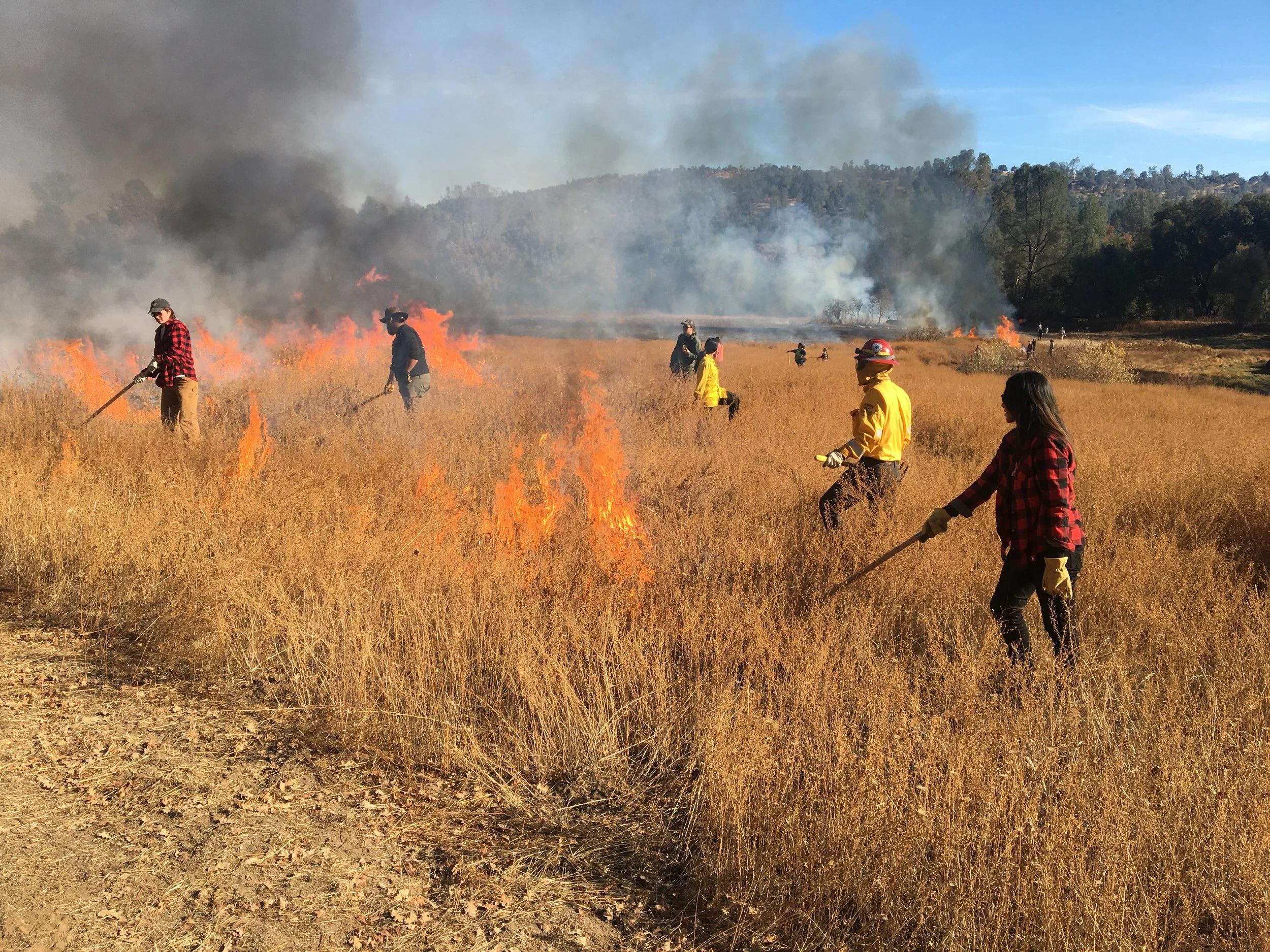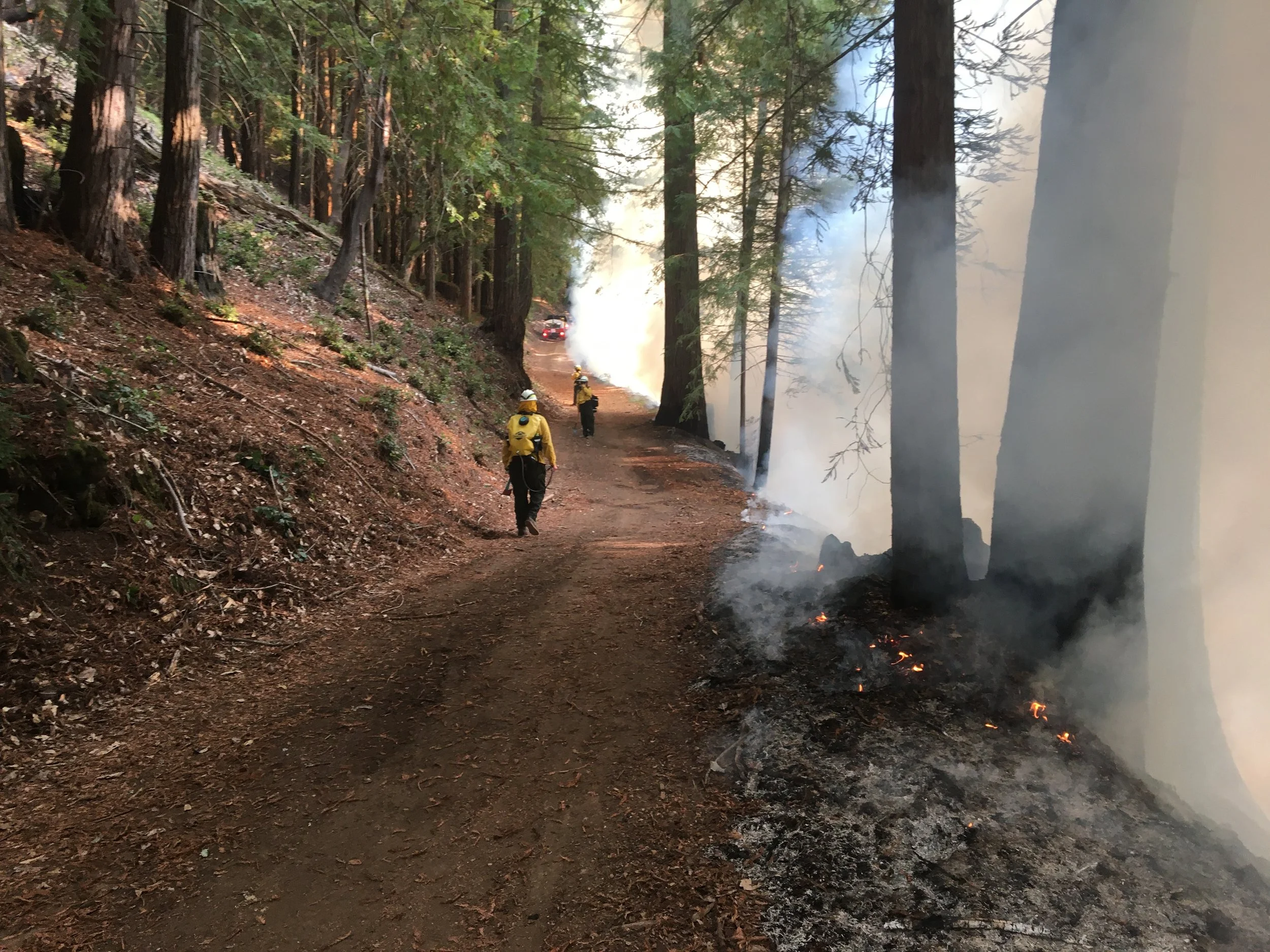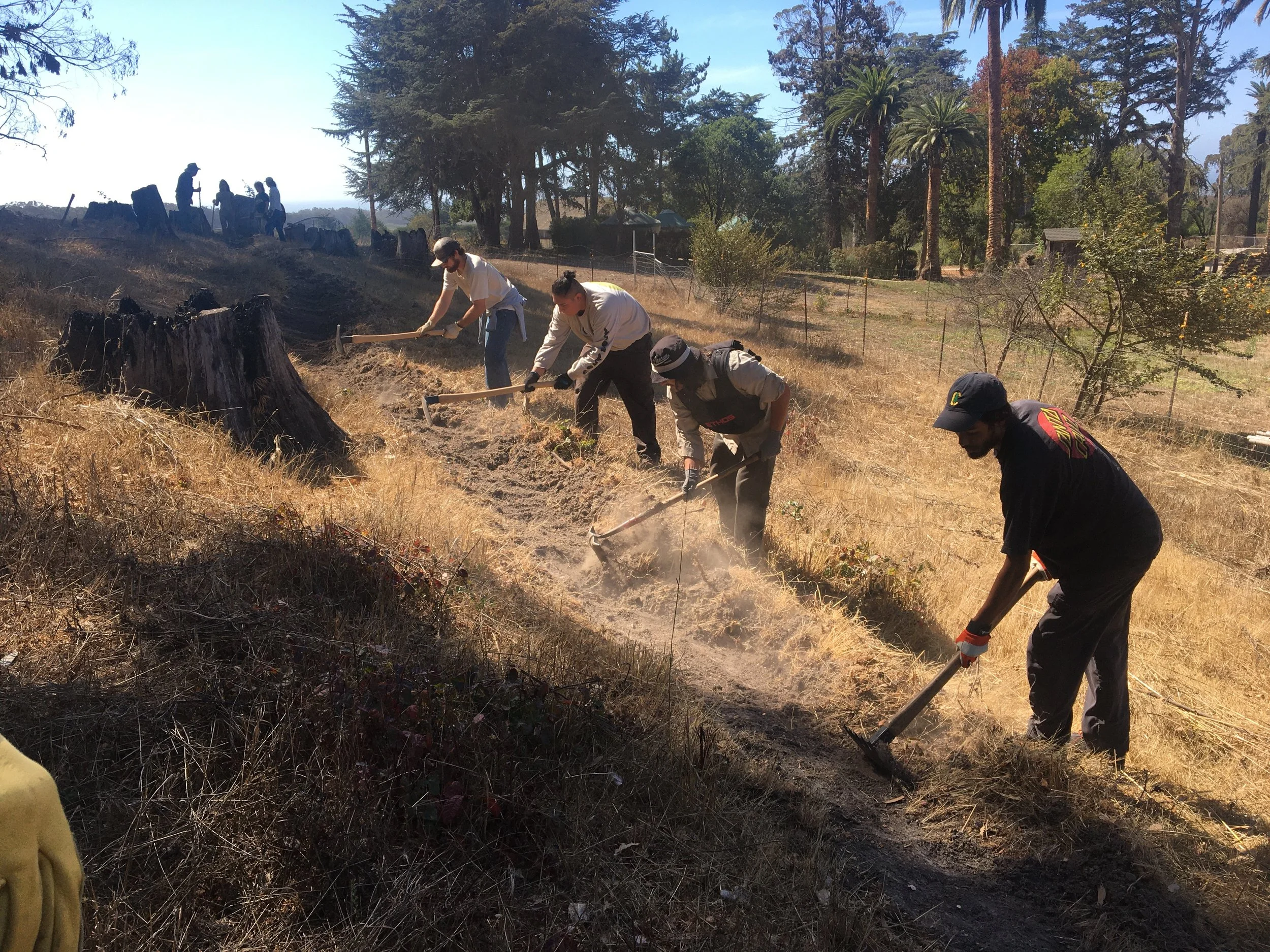
Is Prescribed Fire Safe?
By the Central Coast PBA
Prescribed fire is safe because it is planned fire. Whether it is the landowner or a Burn Boss planning a burn, the act of outlining important factors such as desired weather, stewardship objectives, control resources, and smoke dispersal, makes prescribed fire exceedingly safe. A study by John Weir of the Oklahoma Cooperative Extension indicates that fewer than 1% of burns result in an escape (Weir et al. 2018). In addition, many PBA led burns are planned and lit by those living in the communities they are burning in, leading to greater investment in making sure they go smoothly and safely.
The "prescription" is all about the weather. Anyone who has made a campfire knows, if you light one in very wet conditions or in dry and windy weather, things probably won’t go well for you. The same applies to prescribed fire. The prescription outlines desired weather for the stewardship objectives and parameters that make burning easy to control. Common factors include: wind, relative humidity, temperature, dead woody moisture and live vegetation moisture.
Firelighters use many controls, beyond the weather, to conduct safe controlled burns.
Common controls include:
Control lines such as roads, dozer-lines, trails, waterways, ridges, rock outcrops, wet woods, old burns and "handline" (aka temporary trails) are often utilized to box in a burn.
Road as control-line
Hand-line being cut
Altering the vegetation to be less flammable near control lines before a burn is sometimes necessary. Such methods include removing ladder-fuels in trees, cutting thick brush or heavy logs, pile burning and pulling duff or leaf litter away from tree trunks to decrease the fire's intensity on the edges.
Using fire to control fire is a key method for firelighters.
Common "firing" methods are:
Commencing a burn with a "test burn," to let the fire tell you how its going to burn that day
Blackening the edge with fire, to make control lines wider, before lighting the interior of a burn unit
Starting at a high point and burning downhill, against the direction the fire wants to naturally move
Burning into the wind, against the way fire wants to burn
Using firing patterns such as backing-fire and flanking-fire that set the pace of the burn
Having appropriate "holding" apparatus and skilled people to control the fire is fundamental to any burn.
Holding factors include:
Implementing clear communication processes and chain-of-responsibility. Sometimes, but not always, this may mean having a Burn Boss, Firing Boss and other "Bosses," but titles are not important, as long as everyone knows what they are doing and why.
Having the necessary fire engines, hand-tools and firefighters to control any unforeseen changes in fire behavior.
Post-firing, many forested burns require "mop-up" or extinguishment of slow burning woody material along the edges of the burn, while the interior burns down.
No one likes smoke, especially Firelighters, as it makes their eyes sting and gives them coughs. As such, for both the burners and for neighboring communities, burn planners work with local Air Quality Districts to find days that allow for good smoke dispersal. With good planning and communication, burn planners can impact the area with minimal effect. To learn more about the differences between wildfire smoke and prescribed fire smoke, see this publication by the Forest Service. That said, many plant communities benefit from a temporary smoking, such as Oak trees dealing with Sudden Oak Death invasions.
Prescribed fire is all about the people who live, work, play, subsist and thrive on the land. As such, the biggest factor to safe burning is the people involved and the relationships they create together. A good burn is like a happy wedding, where everyone is thrilled it is happening and wants to be there for the afterparty! If you want to be involved, check out you local Prescribed Burn Association or Prescribed Fire Council.








